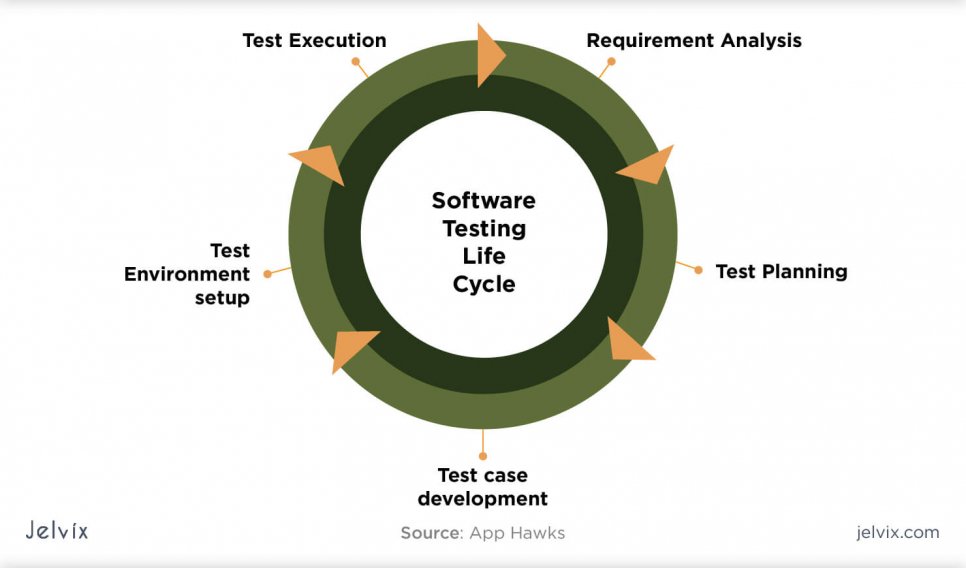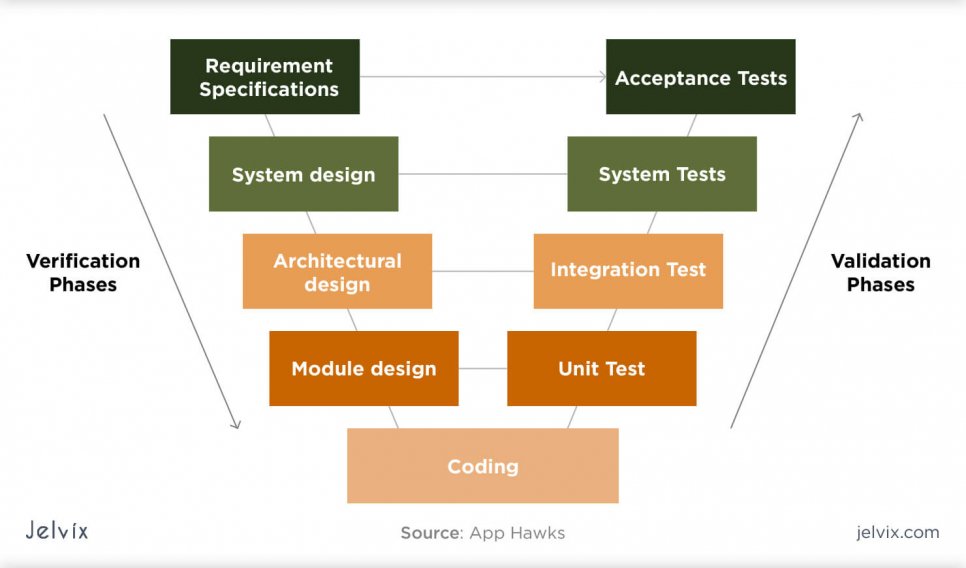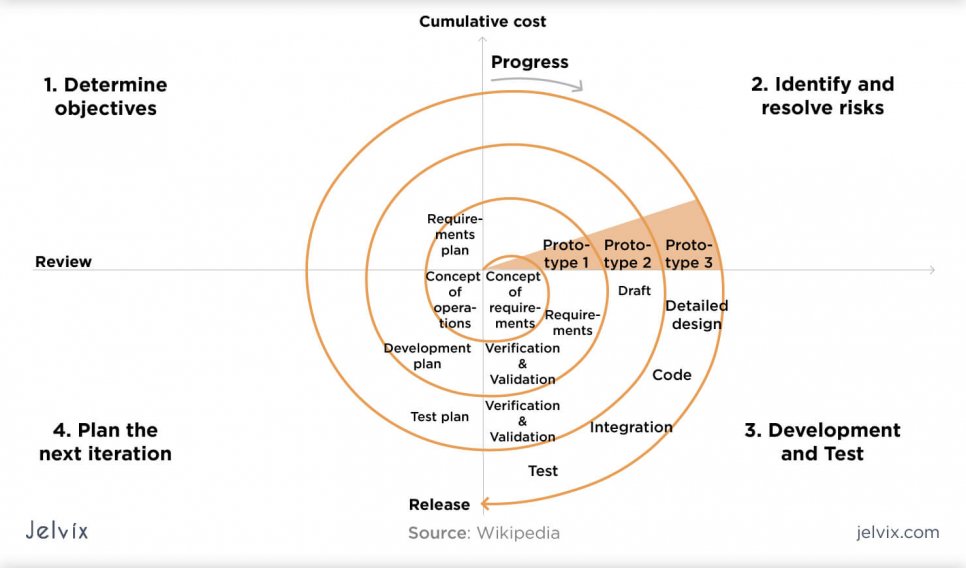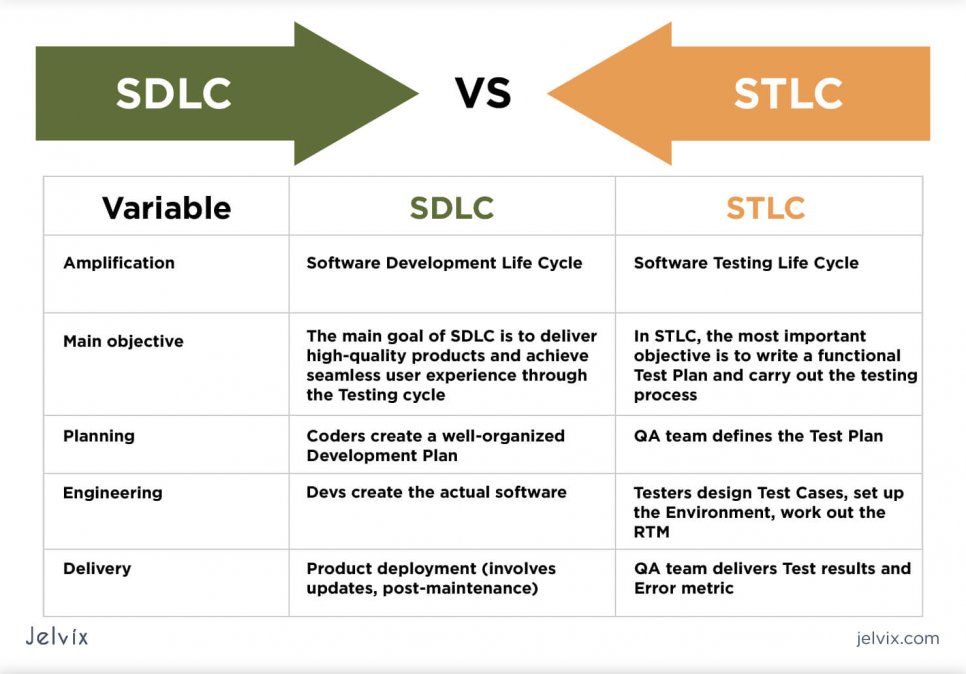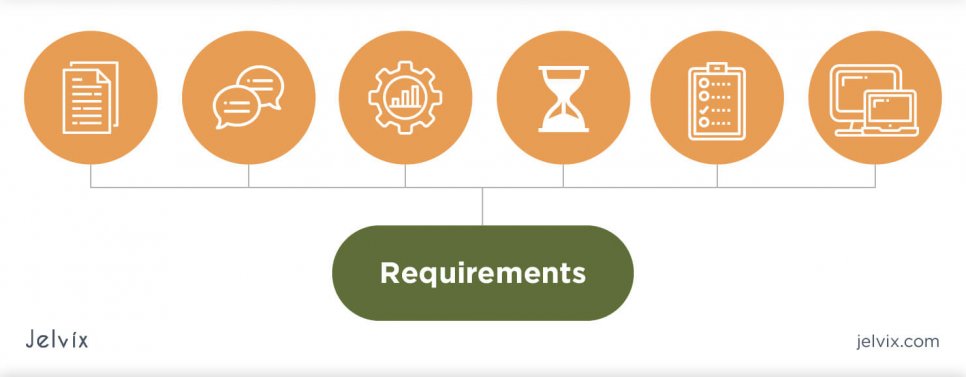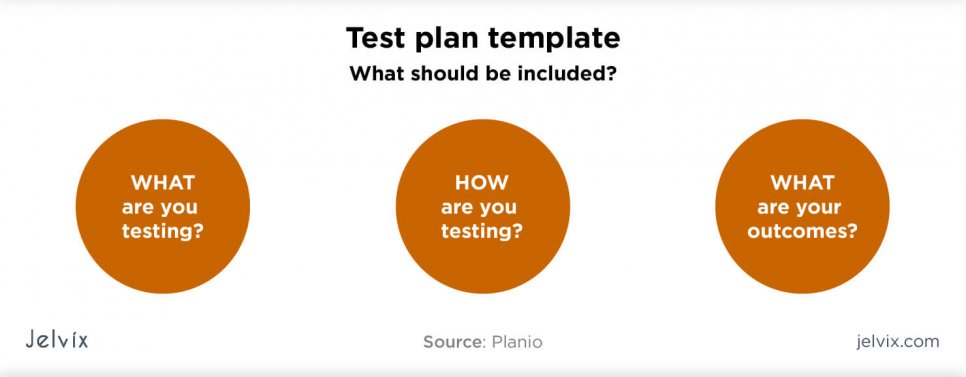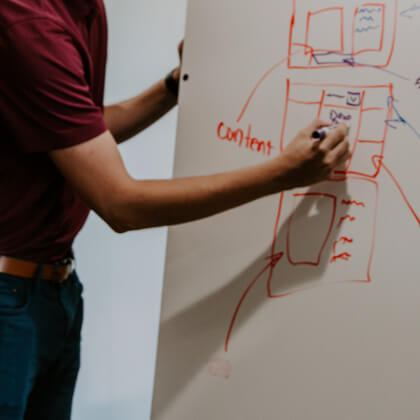Modern software development methodologies as Agile, Scrum, or DevOps apply the principles of incremental and iterative testing in everyday software development. For IT professionals, this means that they must have greater recourse to common principles of the Software Development Life Cycle (SDLC) and associated tools to coordinate the approaches adequately.
Every IT-project involves two fundamental activities – Development & Testing, and each one is composed of four major phases: conception, planning, engineering, and delivery.These phases are standalone modules as they point to product development in an iterative (repetitive) manner. Thereby, for smooth project management, developers need to perform tests gradually, one by one.
Over the past decade, the role of the Software Testing Life Cycle (STLC) in Software Development has increased significantly. The Cycle involves all the critical parameters to help testing teams verify the quality of the code and ensure a smooth deployment. Today, STLC is an integral part of every development cycle as it helps engineers address software bugs much faster and in a more accurate way.
Accordingly, STLC entails systematic testing (a set of tasks) and is held in parallel with the software development process; in case the issue is not resolved before deployment, the software company risks rolling over the client’s project.
There are many approaches to software assessment, but we would like to focus on Agile Software Testing. When it comes to testing our own products, we end up choosing the most advanced software methodology, referred to as agile methods. This testing practice requires a sequential assessment of software processes involving both product owners and testing teams.
In this guide, we will discuss six major points of STLC and explain them in detail.
The Importance of Software Testing Life Cycle
When testing software, development teams usually rely on rapid but comprehensive tests. To test on agile terms means to ensure quality software within weeks and deliver the end product to the market.
Quality and consistency are the main principles of agile testing because there is too much at stake (budget, project resources, client’s requirements, deadlines, etc.). Hence, to get the wheels turning, programmers should pay special attention to possible negative scenarios and recursive testing.
Notably, there was a time when testing wasn’t a part of the Software Development Life Cycle (SDLC) – it was a separate activity that did not involve the entire team of devs. Hence, testers did not pay close attention to every part of the IT-project, which usually resulted in software failure.
Today, innovative testing methods have helped to create testing patterns, enforce consistency, and reduce common mistakes software testers make.
Key advantages of STLC include:
- direct project and team organization;
- quality assurance;
- predictable development process;
- quick error detection.
STLC Methods
Before we start discussing the STLC process, we will observe its methodologies. Software testing methods fall into four common practices:
Not all testing models are equal; each model has its pitfalls and challenges that need to be worked out. It can be challenging to choose the optimal one from all of them. So, you will need to learn about their specifics and pick the one that best fits the needs of your project.
In the next section, we’ll give basic characteristics that illustrate the utility of STLC methods.
Agile model
When discussing the Agile model, the first association that comes to mind is the concept of incremental testing. The process describes the integration of testing and development cycles, with every phase combined incrementally, i.e., one by one till all the product elements are integrated and tested. In this model, the emphasis is on very small components and active user involvement.
Testing in agile is considered by far the most predominant method since it ensures the elimination of errors at an early stage of development and involves user engagement in the product development process. Like that, by addressing user needs or “project requirements,” digital agencies improve the chances of IT-project success.
The main features of Agile methodology are the following:
- user requirements;
- incremental testing;
- process adaptability;
- smart resource management.
Some of the advantages include:
- efficiency (instant product delivery);
- customers’ satisfaction (users’ involvement in product development);
- control (constant communication between executing parties);
- continuous improvement process;
- less planning (time freedom).
Waterfall model
Contrary to Agile methodologies, the Waterfall model is about sequential testing. Sequential testing requires testers to go through the scripts one by one – including checking at each phase of STLC before moving to the next one. Once the plan is set, there cannot be any changes made. There is, therefore, a need for a fixed software scope and concise requirement specification.
In the olden days, the Waterfall model was used to create CRM, SCM, or HRM systems for enterprise brands. It was the most applicable methodology for managing small projects with a clearly defined scope and requirements. However, one of the failures of the old linear model was a lack of effective project management.
Accordingly, software developed in Waterfall would usually take a year or more to finish. Moreover, this approach denies the principles of co-creation (there is no role of user participation in software development apart from specifying the requirements).
This list illustrates the key characteristics of Waterfall methods:
- regression testing;
- easy to use;
- perfect for small projects.
Advantages:
- review process;
- persistence of linear testing;
- code control before data.
Disadvantages:
- less customer interaction;
- ineffective for big-scope projects;
- greater risks of failure;
- not suitable for complex projects where requirements are changeable.
V-Model
Just like Waterfall, V-Model is a sequence of testing phases, where “V” stands for Validation (Verification). In the V-Model, each step is held in parallel with the corresponding phase of SDLC.
Acceptance test or “system test plan” is the most important phase of the V-methods as it defines the system’s requirements compliance. Before starting the development process, testers need to make sure that the software functionality is consistent with requirements specifications.
V-model benefits also include:
- simplicity in use;
- the test plan is specified before coding;
- real-time error tracking;
- defined user role in the verification phase;
Some drawbacks include:
- rigidity;
- no early samples are produced until the implementation phase;
- requirements do not change during the implementation phase.
Spiral model
Unlike the two previous models, the Spiral model is often used for large-scale IT projects. This methodology focuses on risk analysis and Spirals (development loops) as it combines both linear and iterative approaches. Each spiral addresses one single activity of software development. As you can see from the graph below, Spiral phases do not proceed as a linear series of phases, but rather as a coil with many loops.
The main advantage of employing the Spiral model in product testing is the ability to create prototypes at each phase. As we have learned from the previous examples, testing early prototypes can help diminish the risks of failure and improve overall software performance.
The Spiral model has the following characteristics:
- incremental (subsequent) spirals;
- iterative development process;
- early detection and elimination of errors (through prototypes).
Pros associated with the approach:
- allows changes in requirements;
- good for complex projects;
- ability to manage risks at earlier stages.
SDLC vs STLC: The key differences
Although both processes are integral parts of product development, they have different aims and objectives. For instance, STLC is performed within the SDLC, and is responsible for organizing and controlling the Testing process; as for SDLC, you will need to conduct a series of planning, implementation, and evaluation procedures that define the entire software development project.
Furthermore, the cycles require different teams of developers to act in a concerted fashion. The software cannot be put into production without undergoing the STLC phase and vice versa.
In the Software Development Cycle, business analysts take care of the Development Plan creation, while in the Testing Cycle, QA teams analyze Functional and Non-functional requirements in the plan. These requirements describe functions that a software can or cannot perform.
There is a debate among experts as to whether the attaching conditions of STLC represent a positive gain for both SDLC and STLC; some argue that the value of the development cycle and its active participants exceed the value of the STLC’s technical service.
For example, the role of front-end developers in high-level design is considered more important than UX testers as they turn the design plan into reality on the page. Indeed, the dev teams decide on the development models and create software architecture, but it is QA testers who analyze the SRS, taking into account possible requirements’ errors and evaluating the probability of reaching the project goals.
Six Major STLC Phases
Now that we have learned the importance and benefits of STLC, let’s proceed with it’s six basic principles. STLC consists of different phases which involve Entry and Exit criteria. Entry criteria define activities that must be completed before testing, while Exit criteria set requirements that must be met prior to the disposition phase.
Phase 1: Requirements Analysis
After product requirements are set out, testing teams try to evaluate this information and ensure that it works for the project. During this requirements-gathering phase, they also interact with stakeholders, project managers, technical leads, etc. to prioritize Functional and Non-functional specifications, and identify faults early in the lifecycle. The process also involves prioritizing testable requirements for manual or automation testing.
Requirement Analysis includes the following activities:
- defining software features and characteristics;
- picking out testing priorities;
- analyzing RTM;
- identifying the testing environment.
Entry criteria: testers need to document the requirements (Acceptance criteria and Automation feasibility report).
Exit criteria: testers need to get the documents approved by the client.
Phase 2: Test planning
During the test planning phase, an outline of the testing approach is prepared. Usually, the amount of time spent on planning equals the time of overall testing. But that doesn’t matter much, because every minute you spend in planning saves 10 minutes in debugging.
Key activities in this stage include assigning roles and responsibilities, risk evaluation, and cost analysis. To achieve test objectives, the quality assurance team needs to prepare the following documents:
- Requirements documents (updated);
- Test plan (contains information on the time schedule, environment, resources, etc.);
- Effort Estimation document.
Entry criteria: deliver the above mentioned documents.
Exit criteria: approved Test plan.
Phase 3: The Case Development
The most crucial thing about case development is to design functional Test Cases. In this stage, testers take samples and go back to the User Requirement document to ensure that they are reliable and consistent. Test Cases are then reviewed by QA lead and documented in TCD.
When developing cases, coders might have to rely on automation tools to avoid incorrect implementation. Writing automated test scripts helps teams focus on areas that require manual testing and prevent refactoring. Another point that QA specialists need to prepare is the Requirement Traceability Matrix (RTM).
In Agile CI, it is a common standard for data reporting and collaboration between testing and development teams. Here are the deliverables associated with this phase:
- Test Data;
- Test Cases (approved);
- Automation scripts.
Phase 4: Test Environment Setup
The upward stages involved in STLC do not clearly describe the software and hardware conditions needed for the testing environment. During the Environment Setup phase, QA supervisors and product owners decide on servers and testing tools to set up the environment according to the project’s objectives. Once software build is deployed, coders execute Smoke tests to ensure the readiness of the Test Environment.
Key activities involved:
- environment setup;
- software and hardware configuration;
- smoke test execution.
Entry criteria: Test Plan, Test Data, Smoke tests, bug reporting tools.
Exit criteria: approved Test Cases and the Environment.
Phase 5: Test Case Execution
Provided that all the previous steps were performed correctly, testers carry out the script check, relying on the Test Plan. The most crucial thing during transition is to define meaningful sequences of tests and set priorities. Also, to make sure the product/software runs smoothly on all devices, QA teams use different browsers and operating systems; like that, focusing first on the cross-testing environment will make Test Cases more responsive for RTM evaluation and bug reporting. The results are then presented to development teams.
Other activities include:
- Test Case execution;
- bugs mapping;
- results comparison;
- retesting;
- final report.
Entry criteria: Test Data report.
Exit criteria: Error report.
Let’s take a deeper look at Best practices of QA process improvement.
Phase 6: Test Cycle Closure
The final stage of the testing cycle is about transparency and measuring results. You will need to document all testing activities to ensure correctness in existing software. The test closure report is prepared by QA lead and then analyzed by other team members. The report summarizes the entire testing cycle (strategies used, product quality, total costs, coverage, etc.). It follows the standard procedures:
- Test results analysis;
- evaluation of the following criteria: Test Coverage, Quality, Costs, Time and Objectives;
- test metrics.
Entry criteria: Test case execution summary.
Exit criteria: Test closure report.
Summary
When STLC was first introduced, its original goal was to deliver a Functional Requirements Document. However, due to budget restrictions and limitations on the number of test cases, it was impossible for coders to incorporate all the requirements in the end-product. And that’s when they started to conduct reasonable selections (prioritize client’s requirements) to maximize the quality of the obtained software.
The kinds of STLC methodologies have been evolving, and now they determine the system-wide approach to SDLC. With the advances in Model-Based Software Testing, we have managed to reverse a long process of web and mobile development to improve delivery performance and drive customer satisfaction. Both STLC and SDLC are essential in software engineering, as, without them, applications are prone to lags or failure.
We have discussed the importance of systematic and narrow testing in SDLC. Now that you have understood the key phases of testing, you will find the best approach to your SDLC strategy.
If you are looking for an expert QA-team to secure your IT-project – look no further! Jelvix offers the most advanced QA and testing services on the market. We provide end-to-end solutions to ensure the ultimate quality of your product. Check out our Services page for more information.
Looking for quality assurance and testing services?
Scale an outsourced software testing team to run the entire testing lifecycle.



